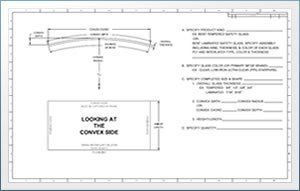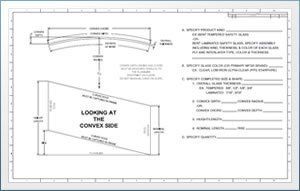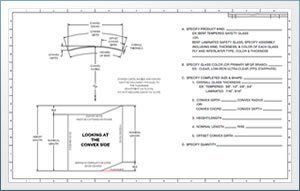Bent/Curved Glass Deals With Parts of Circles With or Without Attached Tangents
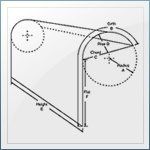
The distance around the outside of a complete circle is called a circumference. A line drawn completely through the circle is a diameter. Any line extending from the center of a circle to the circumference is the radius. The radius will be the same no matter where in the circle it is measured.
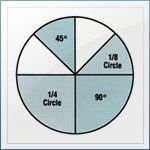
All circles are divided into 360 degrees of arc. Forty-five degrees of arc being equal to an eighth circle, ninety degrees of arc being equal to a quarter circle, etc.
Circular Lite Without Attached Tangent
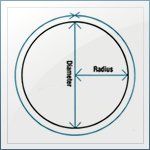
We need to know the distance around the bend. This is called the Girth or Arc. As all measurements, this can be taken to either the convex or concave face of the glass, but always specifies which. This measurement MUST be taken with a flexible tape. We need to know the radius of the curve you need. The radius is one half of the diameter, if this were to be pictured as a complete circle. If you are unable to obtain an exact measurement of the radius, then give us the chord and the depth measurements.

The Chord is the distance straight across the curve, measuring straight across from point to point. This measurement should be made with a flat ruler. To measure the depth of the curve, take one half of the chord measurement and at that point measure to the top of the curve. With the chord and the depth, we can mathematically determine the radius.
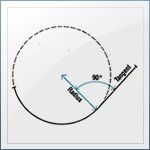
If the glass you need has attached tangents, a tangent being a flat area at the right angle to the radius, we would need additional and slightly different information.

We need the girth. Please note that the term "girth" is the distance around the curve including any flat areas. Measure the chord and the depth as you would for a circular litle. In addition, measure the length of the flat or flats.
Reverse Curve
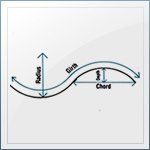
Height
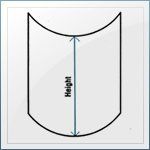
Making a Simple Pattern
Most times sending a physical tracing of the curvature is the best solution to getting your cabinet glass replaced correctly the first time. If you have a duplicate piece or a piece of the original glass with the full length of the curve still in tact then you do not need to worry about getting exact measurements of the curvature. We will match the curvature, arc length, and chord exact to what is sent guaranteed. There are a few things to know before sending the pattern;
- Make sure to trace fully around the curve
- Clearly mark the height, color and thickness
- Mark the start & finish of the glass so it is clear
- Do NOT send pattern folded or not in 1 piece
- Be sure to write your contact info & estimate number if you have already received a quote.
- Preferred material to use is cardboard, poster board or a thick strong paper
- The pattern has the be sent to our physical location & it is HIGHLY SUGGESTED to use a form of shipping that can be tracked to avoid serious delays, no patterns will be accepted via Email, Fax or text message.


